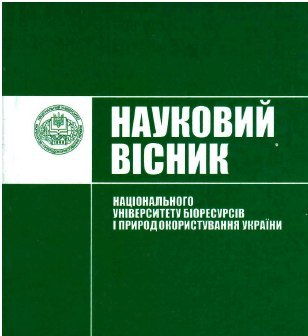Рrinciples of the background and figures interaction in the gestalt content
DOI:
https://doi.org/10.31548/philolog0(263).2017.06%20-%2013Abstract
The causes of changes in the development of the word semantics through the categories of background-figure are established. An experiment that illustrates the psychological and mental nature of semantic twists is described. There are four principles on which the selection of a figure in the background is based.
Introduction. The problem of linguistic units variability, in particular words, has always attracted the attention of researchers. Gesthalt linguistic helps to reveal the nature of the mental mechanism that causes the emergence of meaningful alomemia (variability), in particular, its manifestations, such as metaphor, metonymy, polysemy, homonymy and synonymy.
The purpose of the article is to explain the causes of changes in the development of the word semantics through the categories of background- figure and to determine the principles on which the selection of the figure on the background. is based.
Methods. In this article linguistic description, method of gesthalt analyze were used.
Results. The causes of changes in the development of the word semantics through the categories of background-figure are determined. The figure is an element of a gestalt that is understood clearly, whereas the background is an indistinct, amorphous, unstructured set of elements of a gestalt. Through the correlations between the categories of the background and the figure, the reasons for changes in the semantics of the word are more clearly traced: the new meaning is acquired at the moment of transfer of attention, the translation of the "ray of consciousness" (I. Pavlov) from already acquired values, which, in essence, is the background of the gestalt, on a new element or a new one of its rice, which becomes a new figure. There are four principles of the interaction of the background and the figure, each of which imprints on the formation of the semantics of the word: the principle of the aftereffect of the figure and background, or the principle of constancy of perception of "pictures in the window", the principle of the influence of expectations and predictions, the principle of non-preservation of unchanging, often repetitive information, the principle of comprehension perception.
Conclusions. The public perception of a certain area of reality creates a base of figures in its gesture, and hence the base of figures in the gestalt of the linguistic sign that was correlated with it, thereby forming a depot of possible meanings and connotations, in other words, the premise of the future polysemy and synonymy.
References
Allahverdov, V.M. (1999). Soznaniye i poznavatel'nyye protsessy [Consciousness and cognitive processes]. Psychology.Textbook. Prospekt, 94-132.
Baudouin de Courtenay, I.A. (1963). Opyt teorii foneticheskikh al'ternatsíy [Experience of the phonetic alternatives theory], 265 - 347.
Ermolenko, S.Ya (2009). Mínliva stíykíst' movnoí̈ kartini svítu [Variable stability of the linguistic picture of the world]. Linguistics, 3-4, 94-32 (in Ukr.)
Ivanitsky, A.M. Psychophysiology of consciousness (2006). Psychophysiology: A Textbook for High Schools. Piter, 191 - 206.
Nikitina, F.A. (1973). Vliyaniye analogii na slovoobrazovaniye [The influence of analogy on word formation]. Izd-vo Kiyev. un-ta, 197 (in Rus.)
Slobin, D., Green Ju.(1976). Psikholingvistika [Psycholinguistics]. Moscow, Russia: Progress, 350.
Saussure, F. (1977). Trudy po yazykoznaniyu [Works on Linguistics]. Progress, 695.
Lakoff, G. (1982). Experiential factors in linguistics. Language, Mind, and Brain. Lawrence Erlbaum Associates Publishers, 145-156.
Downloads
Published
Issue
Section
License
Relationship between right holders and users shall be governed by the terms of the license Creative Commons Attribution – non-commercial – Distribution On Same Conditions 4.0 international (CC BY-NC-SA 4.0):https://creativecommons.org/licenses/by-nc-sa/4.0/deed.uk
Authors who publish with this journal agree to the following terms:
- Authors retain copyright and grant the journal right of first publication with the work simultaneously licensed under a Creative Commons Attribution License that allows others to share the work with an acknowledgement of the work's authorship and initial publication in this journal.
- Authors are able to enter into separate, additional contractual arrangements for the non-exclusive distribution of the journal's published version of the work (e.g., post it to an institutional repository or publish it in a book), with an acknowledgement of its initial publication in this journal.
- Authors are permitted and encouraged to post their work online (e.g., in institutional repositories or on their website) prior to and during the submission process, as it can lead to productive exchanges, as well as earlier and greater citation of published work (See The Effect of Open Access).

